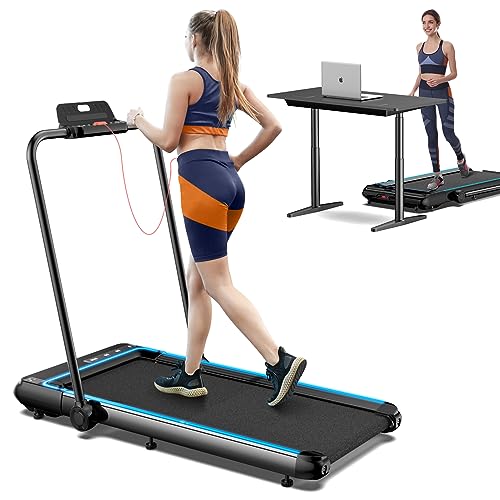
Self Powered Treadmill
Company Description
9 Things Your Parents Teach You About Walking Pad Non Electric
Exploring the Benefits of Walking Pads: The Non-Electric Choice
In the age of modern fitness solutions, where technology reigns supreme and sophistication is typically related to electrical makers, a brand-new trend is emerging in practical workout: the non-electric walking pad. These easy yet efficient tools are catching the interest of physical fitness lovers and casual walkers alike.
In this comprehensive guide, we will explore what walking pads are, their advantages, contrasts with conventional treadmills, and supply answers to often asked concerns.
What is a Walking Pad?
A walking pad is a compact workout platform developed primarily for walking, running, or light running. Unlike conventional treadmills which count on electrical power, non-electric walking pads run on a Manual Running Machine system. Users move themselves forward by walking or running, utilizing their own body weight.
Secret Features of Non-Electric Walking Pads:
- Compact Design: Most walking pads are light-weight and foldable, making them easy to store and transportation.
- User Controlled: The speed and strength of the exercise depend upon the user’s own effort.
- No Plug Required: Perfect for energy-conscious individuals, these pads need no power consumption.
- Silent Operation: A quieter alternative to electric treadmills, making them suitable for houses or shared spaces.
Benefits of Using Non-Electric Walking Pads
Utilizing a non-electric Walking Pad Non Electric pad presents a variety of advantages. Below are some of the popular advantages:
| Cost-efficient | Non-electric models are usually more budget-friendly than their electric equivalents, making them available to a wider audience. |
| Improved Flexibility | Users can walk or jog at their own speed, which is particularly helpful for beginners or those recuperating from injuries. |
| Space-Saving Design | Due to their compact size, walking pads fit comfortably in smaller sized areas, making them perfect for office or home use. |
| Low Maintenance | With no electrical parts, these pads need very little maintenance and are less likely to break down. |
| Ecologically Friendly | No electricity suggests no environmental impact from energy consumption, making them an excellent choice for eco-conscious customers. |
Comparing Non-Electric Walking Pads to Traditional Treadmills
| Power Source | Manual (user-powered) | Electric (plugged in) |
| Cost | Lower in advance cost | Higher initial investment |
| Size | Compact and portable | Larger, often fixed |
| Sound Level | Very quiet | Can be noisy, depending on motor and use |
| Modification | Minimal user settings | Extensive settings (speed, incline, programs) |
| Physical Engagement | Greater strength and effort needed | Simpler to use but might motivate less engagement |
How to Use a Non-Electric Walking Pad
Utilizing a non-electric walking pad is uncomplicated. Here’s an easy step-by-step guide:
- Set Up: Place the walking pad on a flat, stable surface area.
- Adjust the Pad: Ensure that it is at a comfy position for usage– most pads have adjustable angles to customize the walking experience.
- Warm-Up: Before utilizing the pad, conduct a short warm-up regimen, which can consist of gentle stretching.
- Start Walking: Step onto the pad and begin walking at a moderate rate. As your speed increases, you will discover the pad moving.
- Monitor Your Intensity: Pay attention to your heart rate and how you feel. Adjust your speed according to your fitness level.
- Cool Down: Gradually lower your speed before stepping off the pad, followed by cooldown stretches.
Best Practices for Using Walking Pads
To optimize the benefits of non-electric walking pads, think about the following ideas:
- Incorporate Variety: Alternate between walking and jogging for a full-body exercise.
- Engage Your Core: Maintain great posture by keeping your core engaged while using the pad.
- Hydration: Remember to hydrate before and after your workout.
- Consistency: Aim to utilize the Walking pad Non electric pad routinely. Start with 15-20 minutes and gradually increase the duration.
Frequently Asked Questions
1. How reliable are non-electric walking pads for weight reduction?
Non-electric walking pads can be reliable for weight reduction when utilized consistently in conjunction with a healthy diet plan. Because they need more effort, they can allow higher calorie expense during workouts.
2. What is the weight capability of many walking pads?
Many non-electric walking pads can support people up to 250-300 pounds, depending on the model. Always examine the producer’s requirements for precise info.
3. Are there any recommended brand names for walking pads?
Some popular brand names consist of InMovement, ProForm (Manual Walking Machine models), and ECHANFIT, each providing a variety of functions tailored to diverse user choices.
4. Can non-electric walking pads be used outdoors?
These walking pads are generally developed for indoor use. Utilizing them outdoors may expose them to weather that might impact their resilience.

5. How do I save a walking pad?
Lots of non-electric walking pads are foldable. Merely fold them up and save them in a closet, under a bed, or any hassle-free area.
Non-electric walking pads offer an unique and efficient aerobic exercise choice that highlights simpleness and accessibility. By allowing users to develop their physical fitness routine without the restrictions of power cables and complicated interfaces, these pads empower people throughout numerous fitness levels.
For anyone trying to find an inexpensive, space-saving, and efficient alternative to traditional exercise devices, checking out the world of non-electric walking pads may be the perfect next step in their fitness journey. By picking to invest in among these versatile tools, individuals can cultivate much healthier habits while enjoying the empowering experience of motion by themselves terms.
